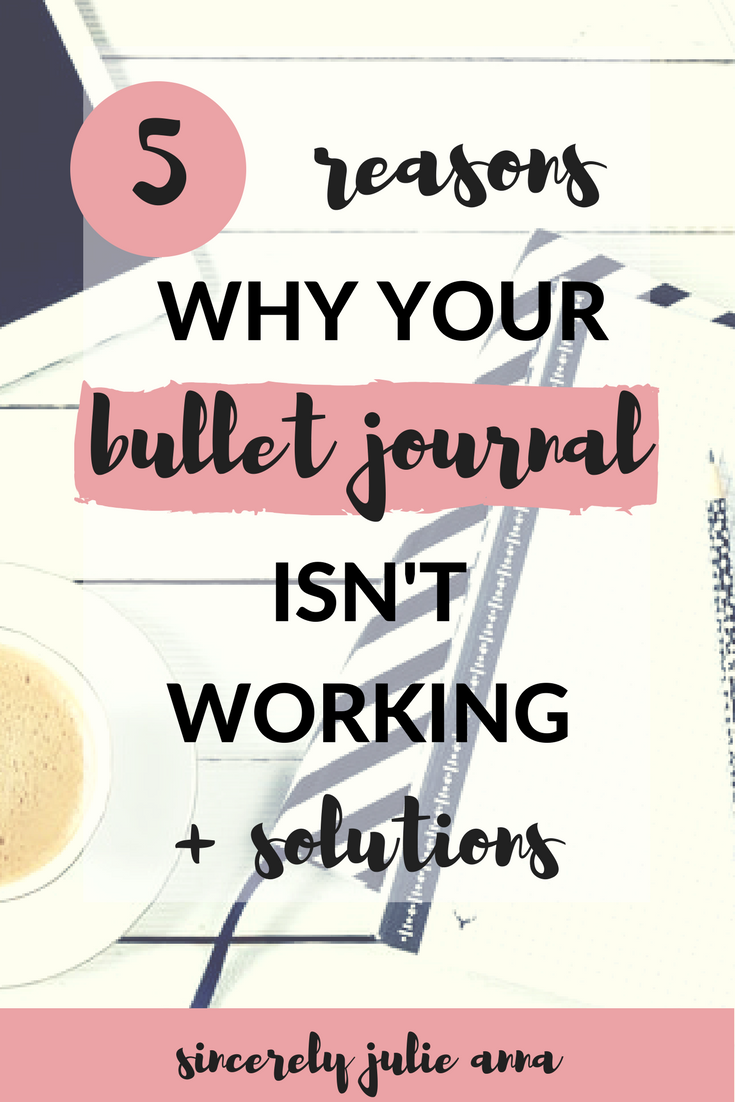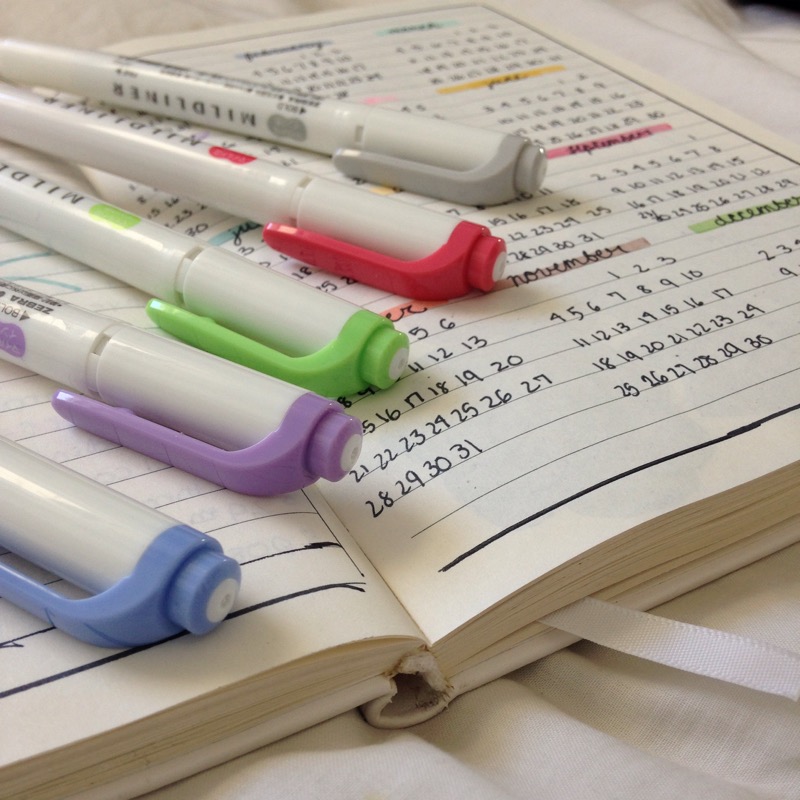
Bullet journals can be an effective way of personalizing your planning needs. Its format can be as simple or complex as you’d like, and its flexibility allows you to change those layouts as much as you need to. However, it’s easy to fall off the tracks with your bullet journal. Maintaining a bujo requires you to make your own spreads, which can be time-consuming. Not only that, but too many trackers or daily layouts may lead to regular maintenance that is hard to keep up with. In my first bullet journal, I’ve had my fair share of blank spreads and unfinished trackers. But I’ve learned what mistakes I was making. Today I’ll be sharing my tips and tricks to ensure your bujo is working for you too.
Disclosure: The following page contains affiliate links. If you choose to go through these links and make a purchase I will receive a commission at no extra cost to you. Thank you for your support!
You’ve got too many spreads.
Finance trackers, mood trackers, habit trackers, a year in pixels…there are so many interesting additions that you can make to your bujo. But it is certainly possible to have too many spreads in your journal.
There are some spreads that you can start wherever in the journal that you might like, for instance, a “Books I’ve Read This Year.” Say you’ve started this spread in February. Around this time you’re updating your drawn-out bookshelf regularly. But after a while, you begin to forget about it. You’re simply not flipping to February pages anymore, and just concentrating on your current monthly spreads.
While the indexing system works for many bujo users, it can still be easy to glaze over old spreads, especially if it’s a “random” spread in the middle of the book.
Solutions: Consider what spreads you use and reorganize.
Before adding a new spread to your bujo, consider whether you’ll return to it regularly. Also, is it useful? Is it better suited in a regular journal?
If your bullet journal feels unorganized for this reason, reconsider your organization strategy. How does your index look? Try getting into the habit of adding the spread to your index before working on it. You can also make page flags out of materials like washi tape to make certain pages stand out.

You’re not filling out your weekly/other spreads daily.
This was my biggest offender for a while. Some days, I had nothing filled in, or I hadn’t filled any bullets in on current tasks. My monthly spreads and trackers were completely falling flat.
Flipping through my bullet journal, I see this happening quite a bit. But that’s not the only problem with this. I’m the type that needs to write tasks down – and if you’re a bujo user, you’re likely the same. On the days where I wasn’t on top of my planning, I wasn’t nearly as productive.
This is a common problem with people using regular planners as well. But with bullet journals, you’ve put time into creating a spread that you haven’t been taking full advantage of.
Solution: Make a routine out of it.
Currently, I use my Sunday morning to do a rough outline of what needs to get done that week. Every morning, I review what I need to get done that day. And every evening, I add in what needs to get done the next day. The rest of my time is journaling time. Along with filling in my Q&A A Day Journal, I fill in all my trackers in my bullet journal. By making it a part of my routine, I don’t forget to fill anything in.
Your spreads aren’t that useful to you.
Adding a spread may seem interesting or useful to you in theory, but in practice, you haven’t really been using it. Perhaps you even fill out all your other spreads, but this one spread has just been sitting there, looking fairly blank in comparison.
Two things could be happening here. It could have been an idea that you really liked, or saw commonly in other people’s spreads, but it’s not as useful to you. Or maybe it could really helpful, but you’re having a hard time keeping track.
Solution: Consider its usefulness in the long term.
If you really can’t get yourself to use a spread, it’s in your best interest to stop drawing them out. It’s okay to not use a certain tracker if it’s not useful to you, even if everyone else seems to have one. One of the great things about bullet journals is that it’s custom to you. It’s always okay to get inspiration, but remember to make it your own, too!
Maybe a certain spread is very useful to you. In my case, it was the mood tracker. For a while, it was the one tracker I wasn’t consistently filling out. But this was something I really needed to keep track of at the time. When deciding whether or not to scrap it, I considered how important this tracker was to me. In order to do that, I had to ask myself a few questions. Why is this important? What exactly am I tracking for? Is there a goal? Now I’m filling out my mood tracker everyday and getting the answers and reflection I need.

You’re dreading setting up for the week/month.
Setting up your spreads always seems like a chore. You don’t want to/can’t set aside the time to fill out all those spreads. It’s too much time that you’d rather spend somewhere else.
This can happen pretty easily. You may want to have a very ornate, beautifully-decorated spread, but bujo artist’s work takes time. Keep in mind the origins of the bullet journal and what it’s supposed to be. If your spreads are taking a long time, they may be too complicated. Even if you don’t decorate, having to draw out boxes for everything can get tedious quickly.
Solutions: Simplify.
Maybe you have too many monthly spreads that can be condensed. Or, instead of making a boxed calendar for your monthly, you can do a line for each day of the month. Take the steps to make things easier for yourself when doing all your pages for the next month.
If you’re looking for quick and decorative, take a look at bullet journal printouts. Others have done the work for you already – all you have to do is print and organize how you wish.
If you still want your bullet journal to be pretty, there are simple ways of going about it without having to be artistic. Check out this post on how to do that.
You only ever look at your weekly spread.
You’re all set up and have five monthly spreads looking perfect. The only problem is, you’re perpetually stuck on your weeklies. You know you’ll really get use out of your other spreads, but there’s a lot of flipping around and the process feels messy.
I did this fairly frequently when I started. When dealing with a regular planner, at most you’ll only be flipping between the monthly overview and weekly. During the switch, the number of spreads you might have to fill in now can be overwhelming.
Solution: Put your trackers on the weekly page.
This was my solution until I adjusted to bigger spreads, but I wouldn’t mind going back to this layout for some spreads. I see this most often with water, sleep, and habit trackers. Some invest in larger journals to make their weeklies (and weekly trackers) bigger. This is also an optimal solution if you’re looking to save pages.
Bullet journals can be a great tool for productivity and goal-setting while enjoying creative freedom when you’d like. I hope these solutions helped you make better use of your journal.How do you set up your bullet journal? Let me know below.
Sincerely,
Julie Anna


